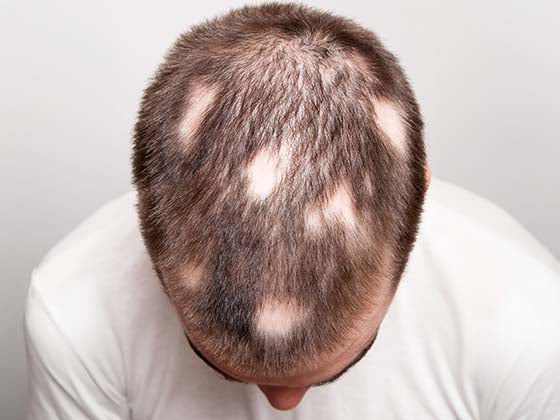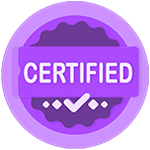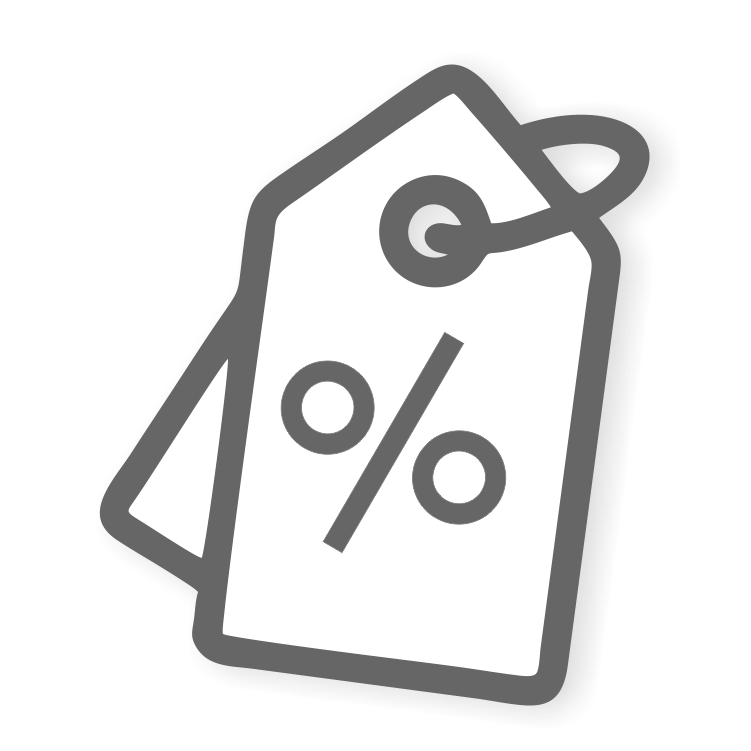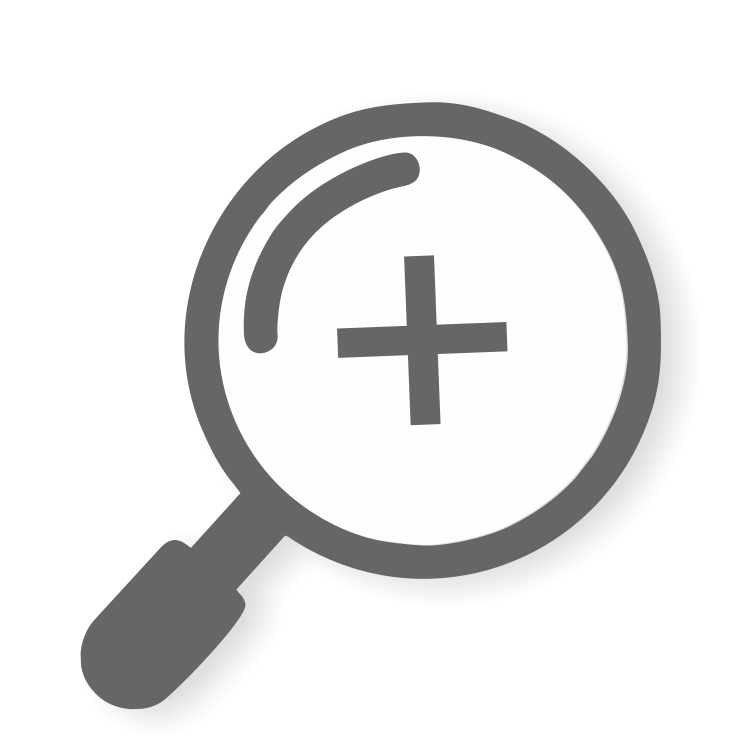Choosing the proper hairbrush for your hair type can significantly improve your hair's health, appearance, and manageability. This blog is a guide to selecting the ideal brush for your hair type.
Different Types of Hairbrushes and Their Uses

There are various sorts of hairbrushes, each suited for a specific hair type and styling requirement. Here's an overview of the most popular hairbrushes and how to utilize them:
-
Paddle brush: Its large, flat surface can cover a lot of hair at once, making it ideal for thick or long hair.
-
Round brush: The circular shape allows you to curl parts of hair while they dry. A ceramic or metal barrel also helps to spread heat, allowing for faster styling.
-
Vented brush: The vents allow air to move through, which shortens drying time and prevents heat damage. Perfect for thin hair that requires a gentle touch.
-
Boar bristle brush: Boar bristles are soft on the hair and scalp, minimizing static and increasing shine by distributing natural oils throughout the hair.
-
Wide-tooth comb: This type of comb is ideal for fragile or curly hair because of the large distance between teeth, which reduces damage and tugging.
-
Tease brush: The fine, closely spaced bristles gently backcomb sections of hair to add lift and texture.
-
Detangling brush: These brushes are soft on the scalp and reduce hair breakage thanks to their flexible, wide-set bristles.
-
Finger brush: This brush is excellent for delicate brushing without straining or damaging hair because its bristles resemble fingers.
-
Hot air brush: The round shape adds volume, and the heat and brushing help you quickly achieve smooth and styled hair.
-
Curling brush: The distinctive shape and design of the bristles give you more control over your curls, resulting in defined, bouncy curls.
-
Spiral brush: The spiral bristles help separate curls without creating frizz by imitating the natural curl pattern.
-
Clog-free brush: The brush's unique design keeps hair from wrapping around the bristles, making cleanup and detangling much simpler.
Paddle Brushes: Best for Straight and Smooth Hair

A paddle brush has a big, flat, rectangular head and wide-set bristles. The bristles can be constructed of a variety of materials, including plastic, nylon, and real boar bristles, and are intended to cover a vast surface area of your hair with each stroke.
-
Begin with dry hair (or moderately damp hair): While paddle brushes work well on both wet and dry hair, using them on dry hair produces the best results for smoothing and straightening. If you're using a paddle brush on damp hair, be sure it's specifically made for that purpose, like a detangling paddle brush.
-
Detangle first: Before you start style, thoroughly detangle your hair with a wide-tooth comb or a detangling brush. This helps to reduce breaking when you start brushing with the paddle brush.
-
Section your hair: To increase control, separate it into pieces. This lets you specifically target tangles while also ensuring that the brush glides smoothly through each section.
-
Use the Brush: Begin from the roots and gradually brush downward to the ends. If you're blow-drying your hair, pull the brush through portions while applying heat to straighten it.
-
Follow with a Serum or Leave-In Conditioner: To get a smooth, shining finish, apply a mild hair serum or leave-in conditioner after brushing. This helps to seal the cuticles and provide gloss.
Round Brushes: Adding Volume and Style

Round brushes are ideal for anyone trying to add volume, texture, and style to their hair. They let you create a variety of appearances, from smooth, straight hair to bouncy curly waves. With the appropriate technique and brush, you can convert your hair into a stunningly styled masterpiece full of movement and gloss.
Boar Bristle Brushes: Enhancing Shine and Reducing Frizz

Boar bristle brushes are an essential tool for anyone trying to create smoother, shinier, and healthier hair. Their ability to distribute natural oils, minimize frizz, and increase shine make them an ideal choice for all hair types. Whether you have curly, fine, or thick hair, a boar bristle brush may help you create a polished, frizz-free look while also improving the quality of your hair. Regular application will make your hair lustrous, silky, and full of life.
How to Match Your Hairbrush to Your Hair Type

Choosing the appropriate hairbrush is critical for maintaining healthy hair and creating the ideal style. varied hair types have varied needs, so choose a hairbrush that is appropriate for your hair's texture, length, and styling goals. Here's a guide to help you find the finest hairbrush for your particular hair type:
1. Fine or thin hair
-
Boar bristles are soft on fine hair, helping to move natural oils from the scalp to the ends. This gives luster and smoothness to the hair without weighing it down.
-
Paddle brushes are gentle on fine hair and help to detangle without pulling. The huge surface area lets you cover big areas fast, making it ideal for daily brushing.
-
A wide-tooth comb is effective on fine hair, especially when wet, to reduce breakage and gently detangle.
2. Thick or coarse hair
-
A vented brush features apertures that enable airflow, making it ideal for thick hair that needs extra help drying and detangling rapidly. Perfect for blow drying and detangling.
-
Paddle brushes with firm, wide-set bristles can help you smooth and detangle thick hair without snagging. Perfect for detangling and smoothing thick hair.
-
A large round brush is ideal for adding volume and achieving beautiful, controlled curls or waves in thick hair. The larger the barrel, the more volume you can produce. Ideal for blow-drying and adding volume.
3. Curly or wavy hair
-
Curly hair is drier and frizzier, so use a wide-tooth comb. A wide-toothed comb allows for gentle detangling while maintaining the curl pattern. Ideal for detangling curly or wavy hair, especially while humid.
-
Boar bristles smooth frizz and disperse oils from the scalp, giving curly or wavy hair a polished finish. Ideal for combing dry curly hair or smoothing out curls.
-
The Denman brush is a popular tool for curling hair. Its properly spaced teeth help you define curls without breaking them or causing frizz. Ideal for shaping curls and increasing volume in wavy or curly hair.
4. Straight Hair
-
A flat paddle brush is perfect for straight hair since it smoothes and removes tangles while maintaining a sleek texture. Perfect for daily use and softening straight hair.
-
A circular brush (medium size) is great for creating slight volume and a smooth, shining finish. It can also be used to create delicate curls and waves. Perfect for blow-drying straight hair.
5. Short Hair
-
A little round brush is great for creating volume, curls, and texture in short hair. It's ideal for lifting the roots or adding definition to short hairstyles. Ideal for styling short hair, particularly while blow-drying.
-
A paddle brush (small to medium size) works well for detangling and smoothing short hair without undue straining. Ideal for regular brushing and straightening short hair.
6. Long Hair
-
A large paddle brush is good at detangling and smoothing lengthy hair. It is ideal for handling thick, lengthy hair. Perfect for daily brushing, detangling, and smoothing.
-
To create delicate waves or volume in long hair, use a big round brush. It is ideal for blow-drying and creating smooth, voluminous hairstyles. Ideal for styling and creating volume while blow-drying.
-
Long hair can become tangled easily, especially when wet. A wide-tooth comb detangles hair without creating breakage or tension. Perfect for gently detangling wet hair.
Hairbrushes for Curly and Wavy Hair

Curly and wavy hair can be a bit tricky to manage, but with the right tools, you can enhance your natural texture, reduce frizz, and keep your curls looking defined and healthy. Choosing the right hairbrush for your curly or wavy hair is essential to avoid damaging your delicate curls and waves. Here’s a guide on which hairbrushes are best for curly and wavy hair and how to use them effectively.
Curly Hair
-
A wide-tooth comb is essential for curly hair because it detangles without disturbing the natural curl pattern. It’s gentle enough to prevent breakage and frizz, and it works best when your hair is wet.
-
A boar bristle brush is gentle and helps distribute natural oils from the scalp to the hair, which can reduce frizz and add shine. It's also great for smoothing out curls when used on dry hair.
-
The Denman brush is a popular choice for curly hair because its widely spaced, flexible bristles define curls without causing frizz or breakage. It can help create bouncy, well-formed curls, especially for tighter curl patterns.
-
A vented brush helps with faster drying because it allows airflow through the bristles. It’s useful for curly hair, as it can reduce drying time while minimizing frizz.
-
The Tangle Teezer is an excellent detangler for curly hair because it has flexible bristles that gently work through knots without disrupting your curls. It’s also lightweight and easy to use.
Wavy Hair
-
Just like with curly hair, a wide-tooth comb is perfect for detangling wavy hair without disrupting the natural wave pattern. It helps to separate the strands without frizzing them out.
-
For wavy hair, a round brush can help enhance the waves and add volume, especially when blow-drying. The round shape can define the waves and create more body, giving you a smooth, bouncy finish.
-
A paddle brush with flexible bristles is great for smoothing out wavy hair without flattening your waves. It’s excellent for detangling and maintaining a bit of texture.
-
A boar bristle brush can also be used on wavy hair to distribute natural oils and enhance shine. It’s especially helpful for taming frizz and keeping waves smooth without flattening them.
-
Similar to curly hair, a Denman brush can work well for loose waves, especially if you want to define your waves or separate them. Its flexible, spaced-out bristles help maintain wave shape while removing tangles.
Best Brushes for Fine or Thin Hair

The best brushes for fine or thin hair and how to use them effectively:
-
Boar bristle brushes: Boar bristles are soft and natural, making them perfect for fine hair because they’re less likely to cause breakage. They also help to distribute the scalp's natural oils down the hair shaft, adding moisture and shine without weighing the hair down. Regular use helps create a smooth, glossy finish and reduces frizz, which is often a concern with fine hair.
-
Paddle brushes: Paddle brushes with soft, flexible bristles (especially those with ball-tipped ends) are ideal for fine hair because they detangle without pulling or tugging. The soft bristles reduce the risk of breakage, which is crucial for fine hair that’s prone to damage.
-
Wide-tooth comb: Fine hair is particularly fragile when wet, so a wide-tooth comb is ideal for gently detangling hair without causing damage. The wider teeth reduce the risk of breakage. Using a wide-tooth comb helps prevent frizz and disruption of the hair cuticle, ensuring that your hair stays smooth.
-
Round brushes: A small or medium-sized round brush is perfect for adding volume to fine hair, especially at the roots. The natural bristles help add lift without causing static. A round brush with natural bristles is gentler on fine hair compared to synthetic options, making it easier to achieve volume without excessive damage.
-
Nylon bristle brushes: Nylon bristles are great for fine hair because they help eliminate static, a common issue for those with thinner hair. Brushes with anti-static properties help keep hair smooth and frizz-free. Nylon bristles are strong enough to detangle without tugging, making them great for fine hair.
-
Vented brushes: Vented brushes are designed to allow air to flow through the bristles, which speeds up the drying process. This is helpful for fine hair as it reduces heat damage by drying hair faster. These brushes are typically lightweight, making them easy to use for extended periods, especially when blow-drying fine hair.
-
Ceramic or ion brushes: Ceramic and ion brushes are designed to evenly distribute heat while styling, reducing the risk of heat damage on fine hair. They also help keep the hair smooth and reduce frizz. Ionic brushes can help seal the cuticle of the hair, adding shine and reducing frizz, which is particularly helpful for fine hair that can sometimes appear lackluster.
Ideal Hairbrushes for Thick and Coarse Hair

Thick and coarse hair requires a hairbrush that can handle its density and texture while also managing frizz, detangling, and smoothing the hair without causing damage. The appropriate brush is vital for keeping your hair healthy and manageable. The best brushes for thick and coarse hair, as well as how to choose and use them efficiently, include the paddle brush with firm bristles, vented brush, round brush, boar bristle brush, denman brush, tangle teezer, and ionic or ceramic brushes.
Caring for Your Hairbrush: Tips for Maintenance

Your hairbrush is an important tool in your hair care routine, and keeping it clean and well-maintained can allow it to last longer and function better. A well-maintained brush not only produces the best results, but also prevents the accumulation of hair, oils, and product residues, which can cause scalp irritation or hair damage. Some maintenance advice for your hairbrush includes cleaning it regularly, detangling it after each use, avoiding getting it wet, protecting it from heat damage, replacing it regularly, storing it appropriately, and taking additional care with specialist brushes.
How to Clean Different Types of Hairbrushes

Proper cleaning of your hairbrush is critical for its function, hygiene, and longevity. Cleaning methods for different types of hairbrushes vary slightly to avoid damaging the bristles or other components. Here's how to clean different sorts of hairbrushes:
-
Plastic or synthetic bristle brushes: Begin by gently removing all of the hair stuck in the bristles with a comb, your fingers, or a cleaning tool. You can also use a pin or a specific brush cleaner to make this step simpler. Fill a bowl or sink with warm water, then add a little amount of gentle shampoo or dish soap. Submerge the brush in water, but do not leave it there for too long. Soaking may cause the plastic to warp. To eliminate any accumulation of hair products, oils, or grime, scrub between the bristles with an old toothbrush or a small cleaning brush. Scrubbing too vigorously can damage the bristles, so be gentle. Rinse the brush thoroughly under warm water. Make sure all soap has been gone, then lay the brush flat with the bristles facing down to dry thoroughly.
-
Boar bristle brushes: Just like with synthetic brushes, use your fingers, a comb, or a brush cleaner tool to remove any trapped hair from the bristles. Be gentle to protect the delicate boar bristles. Boar bristles are more fragile, so use a gentle, sulfate-free shampoo to clean them. Dilute the shampoo with water and use a gentle toothbrush to gently scrape the bristles. To protect the brush's wood and natural bristles, avoid wetting it. Rinse the bristles gently in water. Be careful not to get water into the brush's wooden base. To remove excess moisture, pat the brush with a clean towel and allow it to air dry with the bristles pointing down.
-
Wooden brushes: Use a comb, fingers, or a cleaning instrument to gently remove any hair that has been lodged in the bristles. Wooden brushes should not be submerged in water since the wood can twist or shatter. Instead, use a moist cloth to clean the bristles, taking care not to saturate the brush. To remove product buildup, apply a tiny amount of mild shampoo to the cloth. Wipe off the handle with a moist cloth, using a mild soap if necessary. Avoid submerging the handle in water. After drying the bristles and handle, allow the brush to air dry with the bristles pointing down to prevent water from seeping into the wooden base.
-
Vented brushes: Remove any hair strands that have become lodged between the bristles with a comb or your fingers. The vents make it simple to access the hair trapped inside. Because vented brushes are intended to enable airflow, they are typically constructed of plastic. Fill a sink or dish with warm water and a little shampoo. Dip the brush gently into the water, taking care not to submerge it completely (particularly if it has a wooden handle). To remove product residue and grime from the vents and bristles, clean with a small brush or an old toothbrush. Rinse the brush well with water and dry it with a cloth. Allow it to air dry with the bristles facing downward.
-
Round brushes: Gently remove any hair that has become stuck around the barrel and bristles with a comb or other specific tool. Drying the brush makes it easier to remove hair. Fill a bowl with warm water and a gentle shampoo or dish soap. Dip the brush in water, then use a toothbrush to clean around the bristles. Take care not to wet the brush. To clean the barrel, use a wet towel. If there is product buildup, scrub the barrel's surface with a small amount of soap and water. To completely dry the brush, pat it with a cloth and put it flat with the bristles pointing down.
-
Tangle teezer: Using a comb or your fingers, carefully remove hair from between the flexible teeth. Fill a sink or bowl with warm water and a tiny bit of gentle shampoo or dish soap. Dip the Tangle Teezer into the water and gently swirl it around. Don't immerse it for too long, as the plastic may degrade over time. To eliminate product buildup or filth, clean between the teeth with a tiny brush or an old toothbrush. Rinse the brush well with water, then wipe it dry with a towel. Allow it to air dry with the bristles facing downward.
-
Heated brushes: Always disconnect the brush and let it cool completely before cleaning. Use your fingers or a comb to remove any hair that has gotten caught between the bristles. Wipe down the heated brush's bristles and handle with a moist cloth. Take caution not to get any water on the heating element or electrical components. If there is product buildup, apply a small amount of soft soap to the cloth. After cleaning, let the brush air dry completely before reusing it.
When to Replace Your Hairbrush

Replacing your hairbrush at the appropriate time is critical for keeping your hair healthy and your style process running smoothly. Keep an eye out for these symptoms of wear and tear, and replace your brush if it is no longer functioning as well. A good-quality hairbrush can last for years if properly maintained, but knowing when it's time to replace it will help you keep your haircare routine in tip-top shape.
Keeping Your Hairbrush Hygienic and Effective

Maintaining the cleanliness and hygiene of your hairbrush is critical not only for the brush's longevity but also for the health of your hair and scalp. Cleaning it on a regular basis, disinfecting it, and keeping it in good shape can help you retain its effectiveness, reduce scalp difficulties, and prevent excessive hair damage. A well-maintained brush will help keep your hair looking great every day.
Your Personalized Hairbrush Recommendations for Healthier Hair

Choosing the correct hairbrush for your hair type and problems can significantly enhance your hair's health, making it simpler to manage, style, and maintain. You can take good care of your hair by using the right brush, cleaning it regularly, and brushing it properly. Remember that hairbrushes are not a one-size-fits-all tool; finding the right one for your hair type can help you attain healthier, more beautiful hair.
















